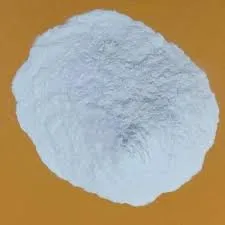
אוג . 06, 2024 13:06 Back to list
Exploring the Applications and Benefits of HPMC in Various Industries and Product Formulations
Understanding the Uses of HPMC (Hydroxypropyl Methylcellulose)
Hydroxypropyl Methylcellulose (HPMC) is a derivative of cellulose, a natural polymer, and is widely utilized across various industries due to its unique properties. HPMC is a white, odorless powder that is soluble in both cold and hot water, making it a versatile ingredient in numerous applications. This article explores the various uses of HPMC, highlighting its importance in sectors such as pharmaceuticals, food production, cosmetics, and construction.
Pharmaceutical Applications
In the pharmaceutical industry, HPMC plays a crucial role as an excipient, which is an inactive substance formulated alongside the active ingredient of a medication. It is often used as a binder in tablets and as a controlled-release agent in capsules, allowing for the gradual release of the drug into the bloodstream. HPMC’s ability to form gels also makes it an ideal agent for suspensions and emulsions, providing stability and enhancing the delivery of active ingredients. Its non-toxic and biocompatible nature further ensures its safety for use in various medications.
Food Industry
The food industry also benefits significantly from HPMC, where it is employed as a food additive. It acts as a thickener, emulsifier, and stabilizer, improving the texture and consistency of food products. HPMC is commonly found in baked goods, dairy products, sauces, and dressings. It enhances the moisture retention of baked goods, prolonging freshness and shelf life. Moreover, HPMC is a popular choice in gluten-free products, providing the necessary structure and mouthfeel that is often lacking in gluten-free alternatives.
hpmc uses

Cosmetic and Personal Care Products
In the realm of cosmetics and personal care, HPMC is utilized for its thickening and film-forming properties. It is an essential component in products such as shampoos, conditioners, lotions, and creams, helping to create a desirable texture while providing stability to emulsions. HPMC allows for improved application and spreadability, enhancing the overall user experience. Furthermore, its water-retaining properties make it beneficial in moisturizing products, keeping skin hydrated and enhancing the efficacy of active ingredients.
Construction Industry
HPMC has found its place in the construction industry, specifically in the formulation of cement-based products such as adhesives, plasters, and mortars. Its use improves workability and enhances the adhesion of these materials. HPMC acts as a water-retention agent, preventing the rapid drying of mortars and allowing more time for application and adjustments. This is especially crucial in construction projects where environmental conditions can affect drying times and material performance.
Conclusion
In conclusion, Hydroxypropyl Methylcellulose (HPMC) is a multifaceted compound with a wide array of applications across various industries. Its role in pharmaceuticals as an excipient, in food as a stabilizer and thickener, in cosmetics as a texture enhancer, and in construction as a water-retaining agent showcases its versatility and importance. As the demand for natural and safe ingredients continues to rise, HPMC stands out as a reliable choice for formulators aiming to deliver quality products across multiple sectors. With ongoing research and development, the uses of HPMC are likely to expand further, solidifying its position as an essential ingredient in modern manufacturing.
-
Versatile Hpmc Uses in Different Industries
NewsJun.19,2025
-
Redispersible Powder's Role in Enhancing Durability of Construction Products
NewsJun.19,2025
-
Hydroxyethyl Cellulose Applications Driving Green Industrial Processes
NewsJun.19,2025
-
Exploring Different Redispersible Polymer Powder
NewsJun.19,2025
-
Choosing the Right Mortar Bonding Agent
NewsJun.19,2025
-
Applications and Significance of China Hpmc in Modern Industries
NewsJun.19,2025







